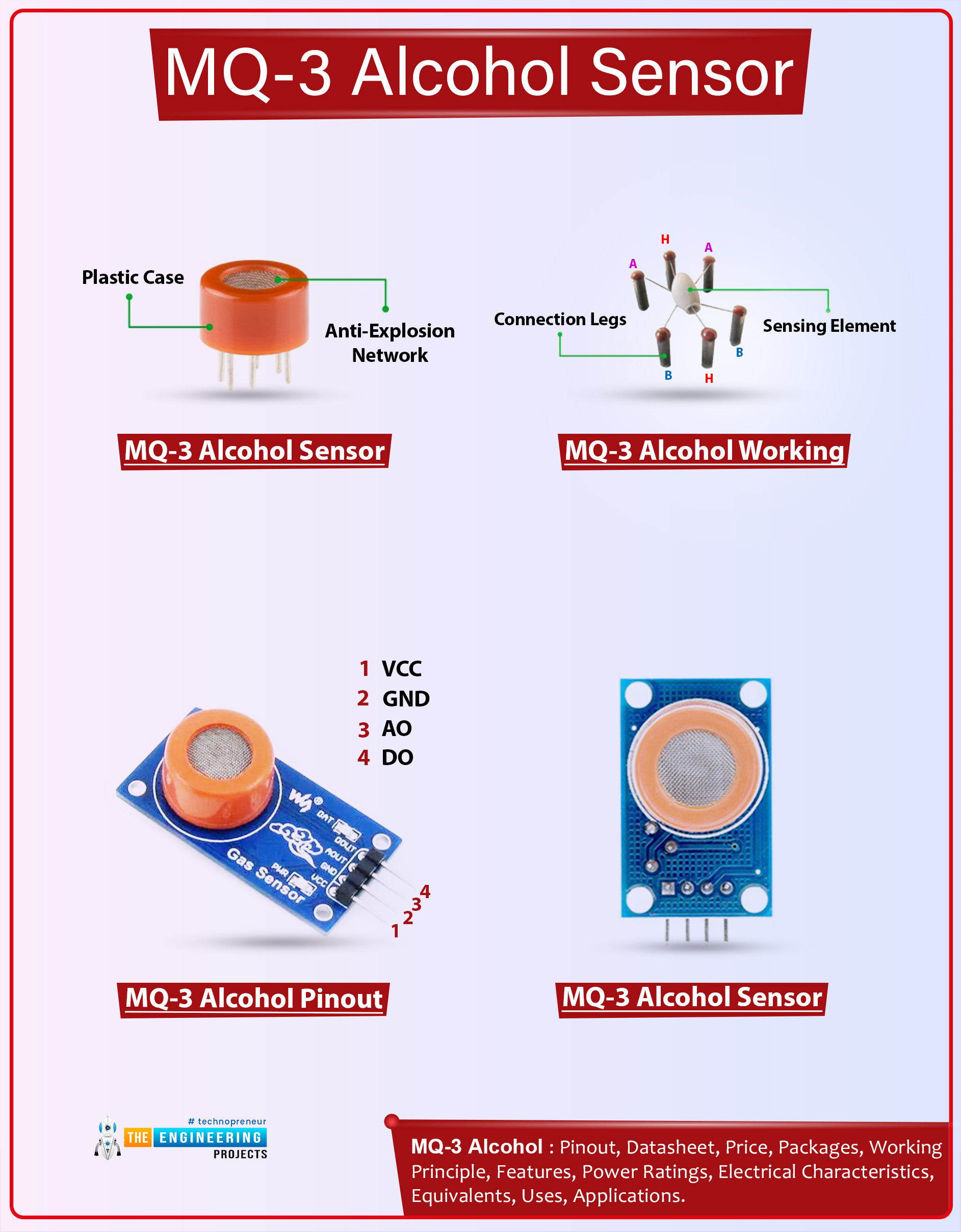
Hey readers! I hope you are having a good day. Today, we are learning the basics of another MQ sensor family, the MQ-3. This sensor is designed for the detection of alcoholic gases in the air surrounding it. Gas sensors are widely used in multiple applications, and they provide information to the other components of the circuit. In the air, it can detect the 25-500ppm alcohol gas concentration and is a highly sensitive detector. We are going to study it thoroughly from scratch.
In this article, we are going to start the discussion with the basic introduction of this sensor. We’ll understand its datasheet and will know the basic details about its internal and external structure. After that, we’ll move towards the features, specifications, and best platform to buy these sensors. Then, we’ll see the circuit diagram and working principles, and in the end, we’ll go through the applications of this sensor. All of this is going to be very simple, and we will try to make it useful and uncomplicated. Let’s move on to the first topic:
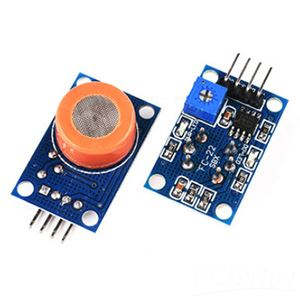
MQ-3 Alcohol Sensor Introduction
The MQ-3 is an alcohol gas sensor that belongs to the MQ gas sensor family and is particularly designed using SnO2 to detect the gas using lower electrical conductivity in the air. When fresh air enters the sensor’s structure, this semiconductor gas sensor can detect the presence or absence of alcohol gases. If the target gas is present in the air, the resistance of the semiconductor material is enhanced with the rise in gas concentration. The structure is designed in such a way that it has a high sensitivity to alcohol. Moreover, it has good resistance to gasoline, smoke, and vapors.
The following gases are possible to detect using an MQ-3 alcohol sensor:
- Ethanol (primary target gas)
- Aromatic hydrocarbons:
- Toluene
- Benzene
- Xylene
- Chlorinated hydrocarbons:
- Trichloroethylene
- Dichloromethane
- Amines
MQ-3 Alcohol Sensor Datasheet
The MQ-3 alcohol sensor is studied in different ways. Here are the three tables that will define the specifications of this sensor depending on different sets of parameters:
Standard Work Conditions
In the standard work condition, the characteristics given in the table below are considered:
Parameter |
Value |
Units |
Technical Condition |
Remarks |
Symbol |
Vc |
VH |
RL |
RH |
Parameter name |
Circuit voltage |
Heating voltage |
Load resistance |
Heater resistance |
Technical condition |
5V±0.1 AC OR DC |
5V±0.1 ACOR DC |
200KΩ |
33Ω±5% Room Tem |
MQ-3 Alcohol Sensor Environmental Conditions
The following parameters are considered when checking the environmental characteristics of the MQ-3 alcohol sensor:
Symbol |
Parameter Name |
Technical Condition |
Tao |
Operating Temperature |
-10℃-50℃ |
Tas |
Storage Temperature |
-20℃-70℃ |
RH |
Related Humidity |
less than 95%Rh |
O2 |
Oxygen Concentration |
21%(standard condition) |
MQ-3 Alcohol Sensor Sensitivity Characteristics
Moreover, here is the table related to the sensitivity characteristics of the MQ-3 alcohol sensor:
Symbol |
Rs |
α |
Vc |
Vh |
Parameter name |
Sensing Resistance |
Concentration slope rate |
Circuit voltage |
Heating voltage |
Value |
1MΩ- 8 MΩ (0.4mg/L alcohol ) |
≤0.6 |
5V±0.1 |
5V±0.1 |
Technical Condition |
0.4mg/L alcohol |
Standard detecting condition |
N/A |
N/A |
MQ-3 Alcohol Sensor Structure
Before learning the structure diagram, it is important to understand the configuration of the sensor. It contains three sets of pins (collectively six pins):

The above images show the 2D configurations of the MQ-3 alcohol gas sensor. The details of these pins will be discussed in the table below:
Pin Name |
Function |
H1 |
Heater power supply (5volts DC) |
H2 |
Ground |
A1 |
Sensor supply voltage (5 volts DC) |
A2 |
Output voltage (analog, proportional to alcohol concentration) |
B1 |
Ground |
B2 |
Not used (can be left floating) |
MQ-3 Alcohol Sensor Sensitivity Curve
The core material in these gas detectors is highly sensitive to heat which plays an important role in gas detection. Before using any sensor, it is crucial to check its sensitivity graph. Here is the graph for the MQ-3 alcohol sensor:
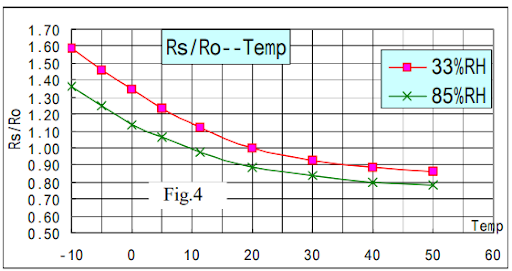
In the figure above, the parameters used are understood by the following explanation:
- The Rs is the sensor’s resistance when it is exposed to a particular alcohol vapor concentration. The increase in concentration results in a decrease in Rs, and vice versa.
- The R0 determines the sensor’s resistance in clean air when no alcohol is present in it. Hence, it is used as the baseline reference when dealing with the comparison between conditions.
- The ratio of both of these is an estimation of the relative change in resistance. It is proportional to the alcoholic concentration in the air and, therefore, is helpful for the sensor’s working.
So it was the information about the datasheet, and if you require more details, then you visit the following link:
MQ-3 Alcohol Sensor Pinout Configuration
The MQ-3 alcohol sensor has four external pins, and its pin diagram is given here:

A brief description of each of them is given in the table:
Pin Name |
Function |
VCC |
Sensor power supply (typically 5 volts DC). It provides the main operating voltage for the sensor. |
GND |
It is the ground pin. This is the reference point for electrical connections and ensures proper circuit operation. |
Heater |
Heater element power supply, which is typically 5 volts DC. This powers the internal heater element and plays a crucial role in the sensor's response to alcohol. |
AO |
It is an analog output voltage level proportional to alcohol concentration. This pin provides an analog voltage signal that varies based on the amount of alcohol detected by the sensor. Here, the specific voltage range and sensitivity will depend on the specific sensor model and surrounding conditions. |
MQ-3 Alcohol Sensor Packages
Package Format |
Description |
Applications |
DIP (4-pin) |
Standard through-hole, easy prototyping |
|
DIP (6-pin) |
Standard through-hole, with additional pins for features |
|
SMD |
Compact surface mount for PCBs |
|
TO-220 |
Larger package with heat dissipation tab |
|
Custom Module (Basic) |
Encapsulated with basic circuitry |
|
Custom Module (Advanced) |
Encapsulated with additional features & communication |
|
MQ-3 Alcohol Sensor Alternatives
The MQ gas sensor family works on the detection of different gases. In some cases, these can be used alternatively. But if we talk about the other classes of gas sensors, some other detectors can be used in place of the MQ-3 sensor, and these are listed below:
- Electrochemical Sensors
- Metal Oxide Semiconductor (MOS) Sensors: MQ-135, MQ-303A
- Photoionization Detectors (PIDs): MiniPID 2, ppbRAE 3000
- Infrared (IR) Sensors: Figaro TGS822, Sensirion SENSPAIR SFK-D8
- Tunable Diode Laser (TDL) Sensors: Gasmet Dx4340, Aerodyne QCL-32
Where to Buy MQ-3 Alcohol Sensor
There are different ways to buy electronic components like MQ-3 but the most promising platforms to buy these products online are:
- eBay
- AliExpress
- Amazon
MQ-3 Alcohol Sensor Working Principle
The working principle of the MQ-3 alcohol sensor can easily be understood by learning its internal structure. It is a heat-driven sensor and, therefore, is covered under the mesh known as the anti-explosion network. This network is the double layer of the stainless steel material that ensures the heat-sensitive material inside the sensor remains safe from the outside’s flammable gases. The special feature of its structure is the presence of a plastic cover that we don't see in models like MQ-2. This cover not only protects the sensor but is also responsible for filtering unwanted materials.
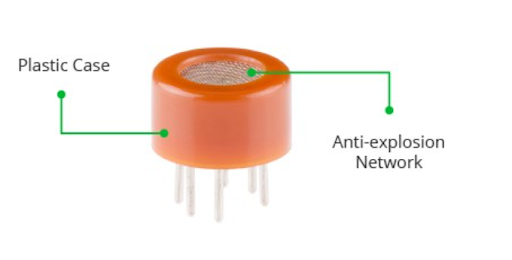
Inside this mesh, there is a simple star-like structure of the sensing material surrounded by the size elements. These are called the connecting legs and consist of three pairs of leads. The two H leads are connected to the Nickel-Chromium coil. It is a popular conductive alloy that helps to maintain the connection between the star-structured elements.
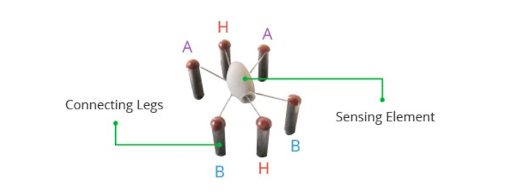
The remaining leads (A and B) are connected with the sensing element. All of these are connected together with the help of platinum wires that make the structure more protected and provide conductance as well.
In the case of the MQ-3 alcohol sensor, aluminum oxide (AL2O3) ceramic with a tin dioxide coating (SnO2). is used in the form of a tubular structure and is known as the sensing element. It is important to notice that tin oxide is the most important element here because it is sensitive to alcohol, which is the basic purpose of this sensor. The role of aluminum oxide is to improve efficiency and heat sensitivity. It maintains the continuous heating of the system and, as a result, helps in efficient results.
Now, that you know the basic structure, you can understand the flow of the MQ-3 sensor:
- When the MQ-3 alcohol sensor is turned on, the circuit heats the internal structure of the sensor. As a result, the SnO2 layer is at a high temperature. It results in the absorption of oxygen from the surrounding air.
- This results in a depletion region around the sensing element that creates a potential barrier. This barrier makes the sensitive element more resistive, so the electric flow is affected.
- When the alcohol gas is present surrounding the sensor, the electrical resistance decreases because alcohol reacts with the sensing element’s depletion region.
- The change in the electrical resistance is inversely proportional to the current flow; therefore, the change in current results in the detection of alcohol gas.
- The higher the alcohol concentration in the air, the higher the values obtained at the analog pin.
- The analog values can be converted into digital output using the LM393. It is a high-precision comparator that converts the values, and, as a result, the digital values are present at the D0 pin.
- This module also has a built-in potentiometer that has the feature of setting threshold values. As a result, the module will show a low output unless the values reach the threshold.
MQ-3 Alcohol Sensor Physical Dimensions
The physical dimension of the MQ-3 alcohol sensor is similar to that of its other companion sensors. These are mentioned in the table below:
Dimension |
Value |
Units |
Notes |
Diameter |
20 |
mm |
N/A |
Height |
30 |
mm |
N/A |
Pin Length |
4-5 |
mm |
Can vary slightly depending on the manufacturer |
Weight |
~8 |
grams |
N/A |
Mounting Hole Distance |
18 |
mm |
Centre-to-centre distance between holes |
Pin Pitch |
2.54 |
mm |
Distance between pin centers |
MQ-3 Alcohol Sensor Applications
The MQ-3 is designed to test the presence of alcohol-related gases. It is usually the part of the project that is designed for safety purposes. Here are some common applications for which MQ-3 is a popular choice:
- Basic breathalyzer (informative, not legal/professional)
- Air quality monitoring (broad VOC/combustible gas detection)
- Home gas leak detection (limited, not specific)
- Educational projects (learning gas sensing, basic electronics)
- Non-critical industrial gas detection (budget option)
One must keep in mind before using this sensor that it is not an accurate sensor and certain limitations are tied to it. Therefore, it is not suitable for critical applications that require precise measurements.
Hence, today we have learned a lot about the MQ-3 alcohol sensor. It is a sensitive alcohol detector that is used to detect multiple gases. We have seen the data sheet of this sensor, where we have seen the pin configuration, working conditions, and internal structure of the MQ-3 alcohol sensor. After that, we saw the working principle in detail, and after knowing the physical dimensions, we saw the applications of this sensor. I hope I have conveyed all the points, but still, if you want to know more, you can ask in the comment section.



